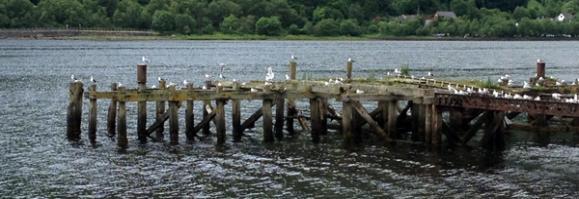
Movement of Gulls in Coastal Habitat
Coastal marine environments contain some of the most diverse and productive habitats. Yet despite their importance, pressure on these habitats has increased markedly over the last several decades. Seabirds that use these coastal marine habitats, as apex predators, have the potential to be used as monitors on the state of coastal habitats. This project is therefore exploring the suitability of herring Gulls in south-west Scotland for such a purpose.
For our study area of south-west Scotland we identified strong spatial variation in the population dynamics of herring gulls over the last few decades. It is this spatial variation that this study is based on. In order to learn more how foraging behaviour and habitat utilisation may differ under different circumstances we are following individual gulls at contrasting sites: comparing sites with different population trajectories over the past years and comparing birds that breed in areas relatively remote from human habitation with birds breeding close to dense human population.
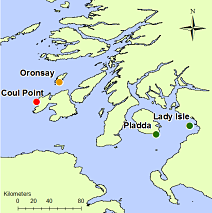
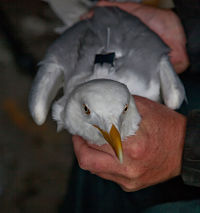
Top: The four colonies across south west Scotland where herring gulls were tagged in 2014. Lady Isle and Pladda where herring gulls have historically increased, Coul Point on Islay where they have historically declined and Oronsay where the population trend is more intermediate between these two extremes. Bottom: A female herring gull from Pladda with the GPS logger freshly attached.
During May and June 2014 we deployed small GPS loggers on to adult herring gulls at four locations in south-west Scotland. The locations where the birds have been visiting are stored within the loggers so that we can download this data by by taking a base station in to the colony. These loggers are being left on the birds until next spring so not only can we see where the birds are foraging during the breeding season but also where they are visiting outside of the breeding colonies during the winter.
So far we have data back from all four locations providing exciting information on what the birds have been up to during the breeding season. Below are just two examples of maps showing the tracks of a female herring gull (Tag 12691) ringed on Lady Isle in the Clyde and a female (Tag 12656) ringed on oronsay RSPB reserve, of of our more remote sites. As you can see the Lady Isle bird spent much more of its time inland visiting terrestrial habitats, whilst the oronsay female has been acting more conventionally spending most of its time along the coast of Colonsay staying much closer to its breeding site (both maps are drawn to the same scale).
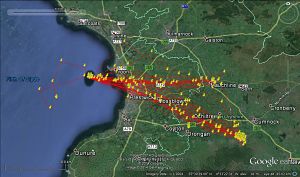
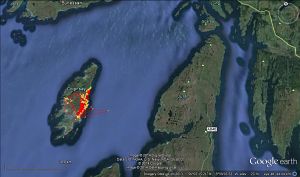
Top: Locations of the Lady Isle female 12691 recorded between 30 May and 9 June 2014. Bottom: Locations of the Oronsay female 12656 recorded between the 6 June and 17 June 2014.
The site will be updated with the newest information about the movement of our birds.
Contact: Nina O’Hanlon

